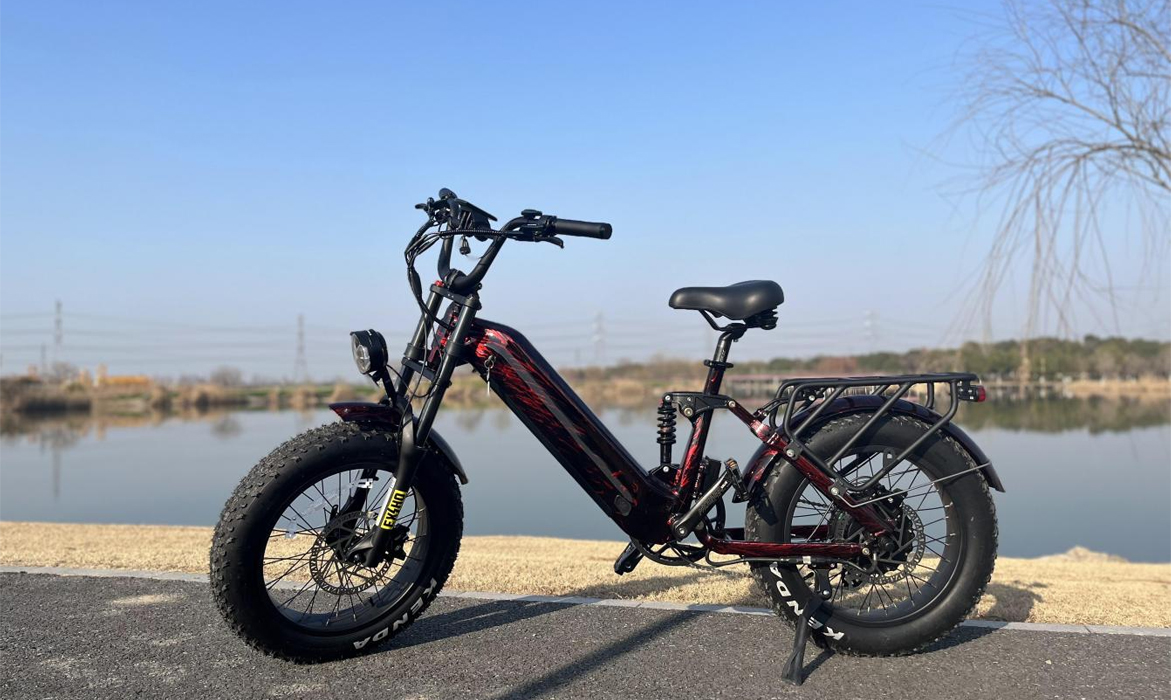When it comes to electric bikes (e-bikes), one of the most important factors to consider is the range of the battery. The range refers to the distance your e-bike can travel on a single charge, and it varies depending on several factors. Understanding these variables can help you make the most of your e-bike and plan your rides effectively. In this article, we’ll explore what affects e-bike battery range in Lantu bike battery company, how to maximize it, and what you need to know before choosing the right e-bike for your needs.

The range of an e-bike is determined by how far the bike can go before the battery runs out of power. It’s typically measured in miles or kilometers, and it can range from as little as 20 miles (32 km) to over 100 miles (160 km), depending on various factors. It’s important to note that manufacturers often provide a "theoretical" range under ideal conditions, but real-world usage will likely yield different results.
Several factors can influence the range of your e-bike, including:
a. Battery Capacity
The size of the battery is one of the primary factors determining the range. Battery capacity is usually measured in watt-hours (Wh), which indicates the amount of energy stored in the battery. A higher Wh rating typically means a longer range. For example, a 500Wh battery might provide a range of around 40-70 miles (64-112 km), while a 750Wh battery could offer a longer range.
b. Motor Power and Assist Levels
The motor power and the level of pedal assistance you choose play a big role in how much energy is consumed. E-bikes by electric bicycles factory typically offer several assist levels, such as Eco, Normal, and Turbo. Lower assist levels use less battery power, thus extending the range, while higher levels (especially Turbo mode) use more energy and shorten the range.
c. Rider Weight
Heavier riders will generally consume more battery power because the motor has to work harder to propel the bike forward. The weight of the bike itself also adds to the overall load, so it’s important to consider the total weight of both the rider and the bike when estimating battery range.
d. Terrain and Riding Conditions
The type of terrain you’re riding on can significantly affect the range. Riding on flat, paved roads consumes less battery power than riding on steep inclines, gravel, or rough trails. Wind resistance is another factor to keep in mind — headwinds can drain your battery faster than tailwinds will conserve it. If you're riding in the city with lots of stop-and-go traffic, you'll likely see a lower range due to frequent accelerations and decelerations.
e. Speed
The faster you ride, the more battery power you use. Most e-bikes have a maximum speed of 20-28 mph (32-45 km/h) on throttle power alone, but if you pedal along with the motor, you can often go faster while conserving energy. Riding at a steady, moderate speed will generally extend your range compared to trying to reach maximum speed.
f. Temperature
Extreme temperatures — both hot and cold — can affect battery performance. In colder weather, batteries tend to discharge faster, and in hot conditions, they may overheat, reducing their lifespan. It’s a good idea to store your e-bike in a moderate environment and avoid charging in extreme temperatures.
If you want to get the most out of your e-bike battery, here are some tips to help you maximize your range:
a. Use Lower Assist Levels
Switching to lower pedal-assist levels will allow you to travel farther on a single charge. Most riders find that Eco or Low levels provide a good balance between power and range for everyday commuting or leisurely rides.
b. Pedal More
The more you pedal, the less work your motor has to do. By exerting more effort yourself, you can extend the battery life and increase the distance you can ride. If you’re on flat ground or in a low-traffic area, try reducing the motor assistance and use your own power more.
c. Maintain Optimal Tire Pressure
Underinflated tires increase rolling resistance, which means the motor has to work harder to propel the bike forward, draining the battery faster. Check your tire pressure regularly and make sure it's within the recommended range for your bike.
d. Plan Your Routes
Plan your rides in advance and avoid steep hills or areas where you might encounter headwinds. If you know you'll be riding on more challenging terrain, try to conserve battery by using lower power modes or planning shorter trips.
e. Regular Battery Maintenance
Taking care of your battery will help ensure it lasts longer and performs optimally. Avoid fully depleting the battery, and try to keep it within a 20-80% charge range when possible. This can help prevent deep discharges, which can shorten battery life.
When selecting an e-bike, it's important to consider your typical riding habits and the distance you expect to travel. If you plan on using your bike for long-distance commuting or recreational rides, it’s worth investing in a bike with a higher capacity battery (500Wh or more) and a reliable motor that suits your riding style. Our Lantu factory offers various wholesale electric bikes for sale. There's always one that is perfect for you.
For those who plan to use their e-bike primarily for short urban commutes, a smaller battery might be sufficient, and you may not need to worry as much about maximum range.
It’s also important to check for battery warranty, as many manufacturers offer warranties that cover defects in materials or performance for a period of time, typically ranging from 1 to 3 years.